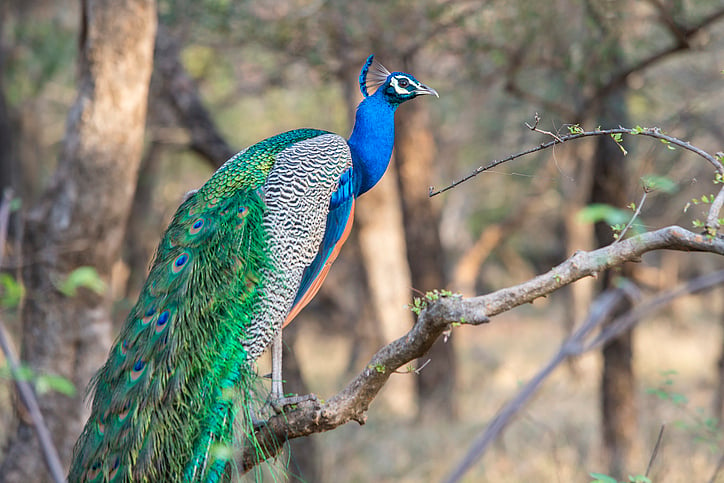
This week, conservationists and bird enthusiasts from all over the world are meeting in Gujarat’s Gandhinagar for the 13th session of the Conference of the Parties to the Convention on the Conservation of Migratory Species of Wild Animals (COP 13). The week-long conference hosts an array of meetings, discussions and activities focused on addressing the threats and challenges faced by migrating species of wild animals. During this event, a first-of-its-kind report, titled State of India’s Birds, has also been launched. The report analyses the range, trends and conservation status of the country’s feathered beauties. But what stood out about it was its contributors—amateur bird watchers from across the country who had painstakingly collated their observations over the years.
The report tracked the trends and distribution of 867 of 1300+ species of birds found in India, based on more than 10 million observations contributed by over 15,500 birdwatchers. These avian enthusiasts were not necessarily researchers, but lay people who were brought together by their love for birds. For over the years, they have systematically recorded their sightings of birds and have provided access to this data.
The toil of these citizen scientists has now shown that in the last five years, out of 146 species studied, the populations of 4 in 5 Indian bird species are dwindling. Many species of raptors, migratory birds and waterbirds have seen a steep fall in their numbers since 2000. The bright spot, however, is that the abundance of about half of the analysed species seem to be stable or increasing in the long term. These include the magnificent Indian peafowl, whose numbers rose by a whopping 50 per cent, and the once-ubiquitous house sparrows, whose populations have stabilised over the last two decades.
Birdwatching is a recreational activity often pursued by those out and about with nature. Armed with binoculars and field guides, these ardent bird lovers use a checklist of known bird species to identify the birds they spot or provide a detailed report on their sightings. Since birds are found almost everywhere, they make their observations on the way to work, in their backyards or specific habitats like grasslands and lakes.
The advent of the internet and mobile phones has now revolutionised how these observations are made and shared. What would once be limited to scribbles on a few pages in notebooks is now being systematically shared across the world, thanks to specific bird monitoring platforms like eBird, which transforms bird sightings into science and conservation. Started in 2002, this online database of bird observations lets anyone submit and use data free of cost. Over time, these observations translate into actionable reports that capture the abundance and distribution of birds in a region.
In India, the eBird platform is managed by Bird Count India, which facilitates numerous bird-related events and projects across the country. It also organises birdwatching events like the Great Backyard Bird Count, Campus Bird Count and Big Bird Days. Besides, there are region-level activities like the Pongal Bird Count in Tamil Nadu and the Onam Bird Count in Kerala. What is common among these events is that they are open to one and all, and every participant uses the eBird platform to note their observations. Building upon these observations, region-specific bird atlases, like the one from Kerala, are made possible.
There are also initiatives like the Asian Waterbird Census that monitors waterbird numbers from over 1400 coastal and inland wetlands in India every year, with volunteers who are birdwatchers. The Common Bird Monitoring Program, led by the Bombay Natural History Society (BNHS) is another effort to encourage more people to watch and observe birds in their backyard or in locations they frequently visit, contribute their observations.
The fascinating aspect of such birdwatching activities is that they not only bring together like-minded bird enthusiasts but also their observations. The platform eBird today provides free access to all of its data, which can be used for scientific research and for drafting conservation policies. For example, the report on State of India’s Birds classified 101 species of birds that need conservation efforts, including 34 that are not considered globally threatened by the IUCN Red List of Threatened Species. Such insights are possible only due to regular monitoring efforts by the birdwatching community. The report also calls for increased collaboration between scientists and citizen scientists for monitoring and conservation of India’s birds.
So, congratulations to you if you have ever participated in a birdwatching program! Not only did you spend time watching nature, but have substantially contributed to the conservation of these birds. If you have not yet, jump on the bandwagon and go birdwatching!
(Spoorthy Raman is an award-winning science reporter and Managing Editor, Research Matters)
Disclaimer: The views expressed above are the author’s own. They do not necessarily reflect the views of DH.